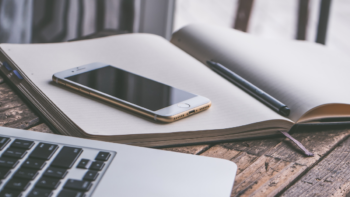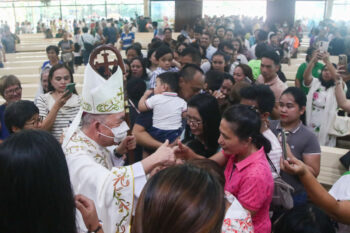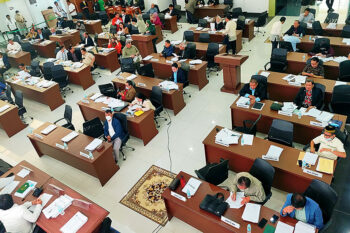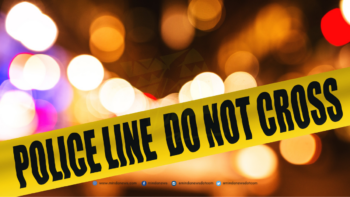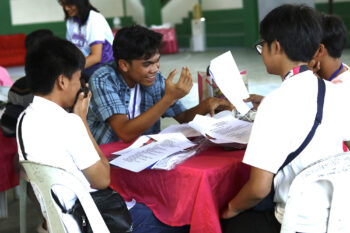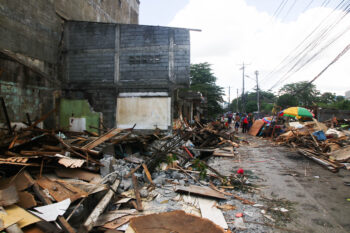4th of five parts: Rebuilding and Modernization
10 Nov 2017
Marawi City must be assisted to rise up quickly and properly. In line with this goal, the following interventions are recommended:
A.) The reconstruction or rebuilding works should be restorative, basic needs-oriented and culture friendly. To minimize problems in the rebuilding works in the central district, such works should be non-disruptive or they should be focused largely on restoration of destroyed buildings, structures and facilities. The property ownership rights and cultural sensibilities of the residents must be recognized and respected. Changes or modifications should be limited to urgently needed road construction and widening, improvement of water system, power, drainage and sewerage system, garbage management, and zoning policies and standards, and other indispensable works. Rehabilitation and reconstruction initiatives should avoid trampling on some sacred or important aspects of M’ranaw culture and Islamic identity. To illustrate, the compounds of some houses or residential buildings in Marawi City (including the central district containing the main battle area) have the graves of the parents or clan leaders of affected owners. Similarly, the high level of religiosity of the M’ranaws that entails easy access of family members to mosques, madaris and torils must be preserved. It should be noted that practically all mosques in Marawi City hold the mandatory five daily prayers (in jamma or group prayer).
B.) Revive community life in Marawi City, basic local services and community facilities must be restored. Hence, partially damaged buildings and infrastructures like public markets, mosques, schools, madaris, torils (live-in Islamic learning centers), health centers, offices, police stations, sports facilities, multipurpose halls, etc. should be repaired, renovated and reconstructed. Damaged buildings and facilities must be replaced with new ones either as transition structures or permanent ones.
C.) Provide appropriate amounts of house repair and rebuilding assistance to owners of private houses and buildings (residential or commercial) which were partially or wholly damaged during the war. The amount is intended to help the owners to start with the repair or reconstruction works as early as possible. The owners should be the ones to undertake the said repair and reconstruction works, subject to zoning policies and guidelines, engineering standards and other government regulations. This suggestion will help much in hastening the repair and reconstruction works and the consequent rebuilding of Marawi City.
D.) Encourage the adoption of creative approaches in generating additional funds for the required rehabilitation works involving common-use structures or facilities. These approaches may include the following: adopt-a-school program, adopt-a-health center program, adopt-a-mosque program, adopt-a-madrasah program, and adopt-a-toril program. For example, with the help of DFA (Department of Foreign Affairs) officials or Muslim leaders, some philanthropists can be potential sponsors/financers for the reconstruction of new big mosques, madrasah schools, or torils to replace the destroyed ones. Similarly, Christian philanthropists or big businessmen can be potential funders of new school buildings, hospitals, or health centers. This approach is proposed as a tenable supplement to government-funded construction or reconstruction of buildings or infrastructure.
E.) The idea of creating a new Marawi City (i.e., a physically modern city) should be pursued to showcase the government’s commitment to the development of the Bangsamoro and other disadvantaged regions in the country. Big ticket modernization projects which are crucial to the long-term growth and development of Marawi City and Lanao del Sur must be prioritized also in the post-siege rehabilitation plan for Marawi City. This means that the proposed master plan for building a new and better Marawi has two program clusters. The first cluster embraces the economic rehabilitation of the affected residents and the rebuilding and reconstruction of the old Marawi. The second cluster includes program components and development initiatives to build a modern Marawi. The new Marawi dimensions of the plan shall consist of modern enclaves which can be located in the existing shorelines of Marawi City (to be proposed for reclamation) from Barangay Calocan to the old public market, Raya Madaya, Pumping, Bangon, Bacolod Chico up to Poona Marantao. The other appropriate expansion areas for the said modern enclaves may be the upper parts of Basak Malutlut (between the Provincial Capitol and MSU Dairy Farm), and the area near the boundary between Marawi City and the Municipality of Ramain-Ditsaan.
While the component programs of the modern Marawi are indeed important, they should not be pursued at the expense of projects and initiatives under the first cluster (the economic rehabilitation of affected residents and the restorative rehabilitation and reconstruction components). In addition to the above points, the proposed plan should include some major infrastructure projects of the LGUs of Marawi City and Lanao del Sur to address the requirements of their growing population and burgeoning economy, and to link them to the major arteries of trade and commerce within the country and the ASEAN (particularly the BIMP-EAGA). In addition, the plan should include some major capital outlay projects of MSU (Mindanao State University) which are necessary in transforming it to become globally competitive, specifically in enhancing further the performance of the instruction, research, and community outreach functions of the 17 big colleges of MSU-Marawi which are important for the formation and development of the human capital required for the long-term development not only of Marawi City and Lanao del Sur but also the Autonomous Region in Muslim Mindanao (ARMM).
The proposed rehabilitation, reconstruction and modernization plan for Marawi should be envisioned as the beginning of a broader development plan embracing not only Marawi City and Lanao del Sur but the whole ARMM. This is necessary if we consider the fact that shielding Marawi City from the threats of violent extremism and radicalism cannot be achieved without addressing or eliminating the factual contextual basis or issues of contemporary Bangsamoro discontent and radicalism obtaining in the various Muslim communities in Southern Philippines (such as poverty and economic marginalization, political domination and inferiorization, etc.). Engaging the extremists in healthy discussions or dialogues on topics related to their cause is not enough to win their hearts and minds, and defeat their ideology.
Addressing these issues will make terrorism irrelevant and consequently lead to its gradual obliteration from our communities, thus shielding the Philippines from the threats of violent extremism and radicalism. The proposal to develop the other provinces in the ARMM stems from the fact that aside from the M’ranaws who comprise the main bulk of the fighters who attacked Marawi City, reportedly a good number of the fighters were from Basilan and Sulu, and a smaller number of foreign fighters. Related to this, the Marawi siege was preceded by armed clashes between government forces and these ISIS-inspired groups in Piagapo Municipality in April 2017 and Butig Municipality in November 2016.
F.) Planning works for the rehabilitation, rebuilding and modernization of Marawi must ensure the preservation and enhancement of its existing roles, particularly as Mindanao’s educational center, with the presence of MSU Main Campus that caters to the educational needs of the youth from the entire old megaregion of MINSUPALA (Mindanao, Sulu and Palawan), and a growing number of tertiary schools; and as an Islamic religious center, with big numbers of large mosques, madaris, and torils in the city. The required planning should also advance the operationalization of the potential roles of Marawi as tourism and cultural heritage center and as economic growth center (based on agriculture and fisheries, cottage industry, and tourism), given the city’s strengths such as the beautiful Lake Lanao, its vast fertile lands, favorable climate, and the presence of MSU with 17 big colleges that include the College of Agriculture, College of Fisheries, College of Forestry, College of Business Administration, College of Engineering, and College of Hotel and Restaurant Management. The proposed plan should also advance the emerging role of Marawi City as a regional sports center, given the available sports infrastructures of MSU-Marawi, such as a big gymnasium, grandstand, swimming pool, and track oval which can be upgraded to national sports standards.
(MindaViews is the opinion section of MindaNews. Dr. Macapado Muslim, University Professor and former president of the Mindanao State University, submitted this policy paper to President Rodrigo Roa Duterte on November 6, 2017. The author says this is a product of a long-running analysis of the Moro armed struggle in Mindanao and an offshoot of the book The Moro Armed Struggle in the Philippines: The Nonviolent Autonomy Alternativ
The author obtained his Ph.D. and M.A. in Political Science degrees from the University of Hawaii where he wrote a dissertation on the Moro armed struggle. He specializes on governance and peacebuilding in multiethnic countries.
Tomorrow: Governance Reforms and Peacebuilding


